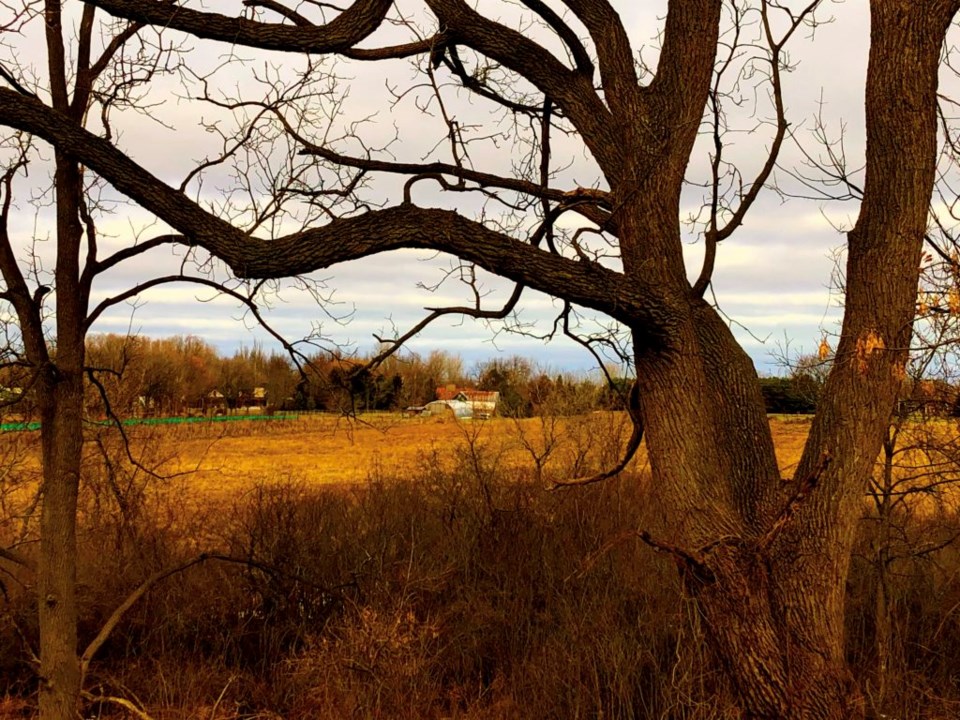
I used to wonder why I would stumble across railway spikes along the forested trail across the street. As a kid, I just saw the Upper Canada Heritage Trail as a tunnel through the woods, an avenue to explore, right out of my own backyard.
I remember looking for frogs, turtles and the like, off the side of the trail, when I would begin to hear voices and a distinct, thumping cacophony.
I would stand as still as a tree, and watch as the horses and their companions moved on by. Watching people on horseback gently bob their way through the woods and farm fields is a childhood vision of Niagara-on-the-Lake forever stuck in my mind.
That was just over 15 years ago, but even so it now seems like a world away. The trail, which links downtown NOTL to the Niagara Escarpment via Concession 1, once fed the area’s growing prosperity, as the first steam powered railway in Upper Canada. That started in 1854, and wrapped up completely by 1969. Since then, cyclists, hikers, horseback riders, and all sorts of folks have used this trail.
Intense downpours and subsequent years of erosion have caused a collapse in the trail that stretches between Line 9 and York Road. This was arguably the most scenic stretch, with the historic railway route gradually rising up onto the spine of a ridge, as you get closer to the Niagara Escarpment. There are beautiful views of sweeping farmland, large trees, and running streams on all sides. It is currently closed, but could be a boon to the recreational trail scene in NOTL.
When Hurricane Sandy really put the nail in the coffin, and caused the ultimate washout that led to this section’s closure, the whole trail system heading back toward downtown NOTL kind of closed down with it.
Many parts of the trail are overgrown with weedy or invasive species, such as European buckthorn and phragmites. Wild raspberry is great, but the purple arches of thorns growing on the trailside, wreak havoc on bikers’ and hikers’ legs. There are plenty of fallen trees in some sections, which add a physical obstacle for many potential recreational uses.
This is why I’m thrilled that NOTL has its own Heritage Trail Committee, formed in 2019, which is planning on re-opening the trail, with big visions for our town.
From someone who still lives near the trail, I couldn’t help but brainstorm some unique opportunities we have to work with the environment. These are merely ideas and visions that could work on a win-win basis to the committee’s goals and objectives.
Emphasis on environmental goals can definitely be achieved, ironically, some without the intention of such, but as a byproduct of how we choose to reshape this trail.
The majority of the remainder of the trail, a straight line running parallel to Concession 1, is generally treeless. For both the aesthetics and the environment, the planting of native tree species along this corridor could only benefit the resuscitation of the trail. They would provide shade and attractive scenery for trail users, as well as habitat for our local bird and mammal species. Win-win.
A family member just the other day said they saw a bald eagle on Concession 1. These birds are likely using the Niagara River corridor as their most comfortable travel route, so having another strip of green running parallel to the river will only increase the ability for animals to move successfully across NOTL, which is important for conservation.
With so much linear space to work with, we could look at having different themed areas of the trail perhaps.
Maybe along one stretch, there is a small-scale arboretum where we plant nationally rare Carolinian tree species, some native ornamental flowers, and informative signs.
A kilometre up the trail, there is a section dedicated as a pollinator garden. These patches of flowering herbs and shrubs would give back to the dwindling cover of such areas, and also benefit the nearby orchards and bee-keeping businesses as busy bees pollinate their way through life.
We could study and select an area where the soil characteristics would allow for the creation of small ponds, where water would seasonally pool and provide breeding grounds for western chorus frogs, spring peepers, and dragonflies. In such areas, there might also be available funding and resources for the creation of bee boxes, bird houses, and other artificial habitat adjustments. If we want to engage the community, there could be a chance for citizen science and public monitoring of these new habitats.
There could be rest spots featuring memorial benches and the odd picnic table, where locals and visitors can stop to take in the sights and sounds of NOTL’s beautiful countryside.
Herein lies an opportunity to open up a path (pun intended) to wellness, exercise, and something a little bit different in NOTL. This trail would also serve as an additional corridor for wine tour guests, who would be safe from summer traffic on the road.
I envision increased visitation for rural businesses along the trail, and perhaps it will be cleaned up enough for horseback-riding again, which would add a nice touch to NOTL’s rural image.
The possibilities are endless!